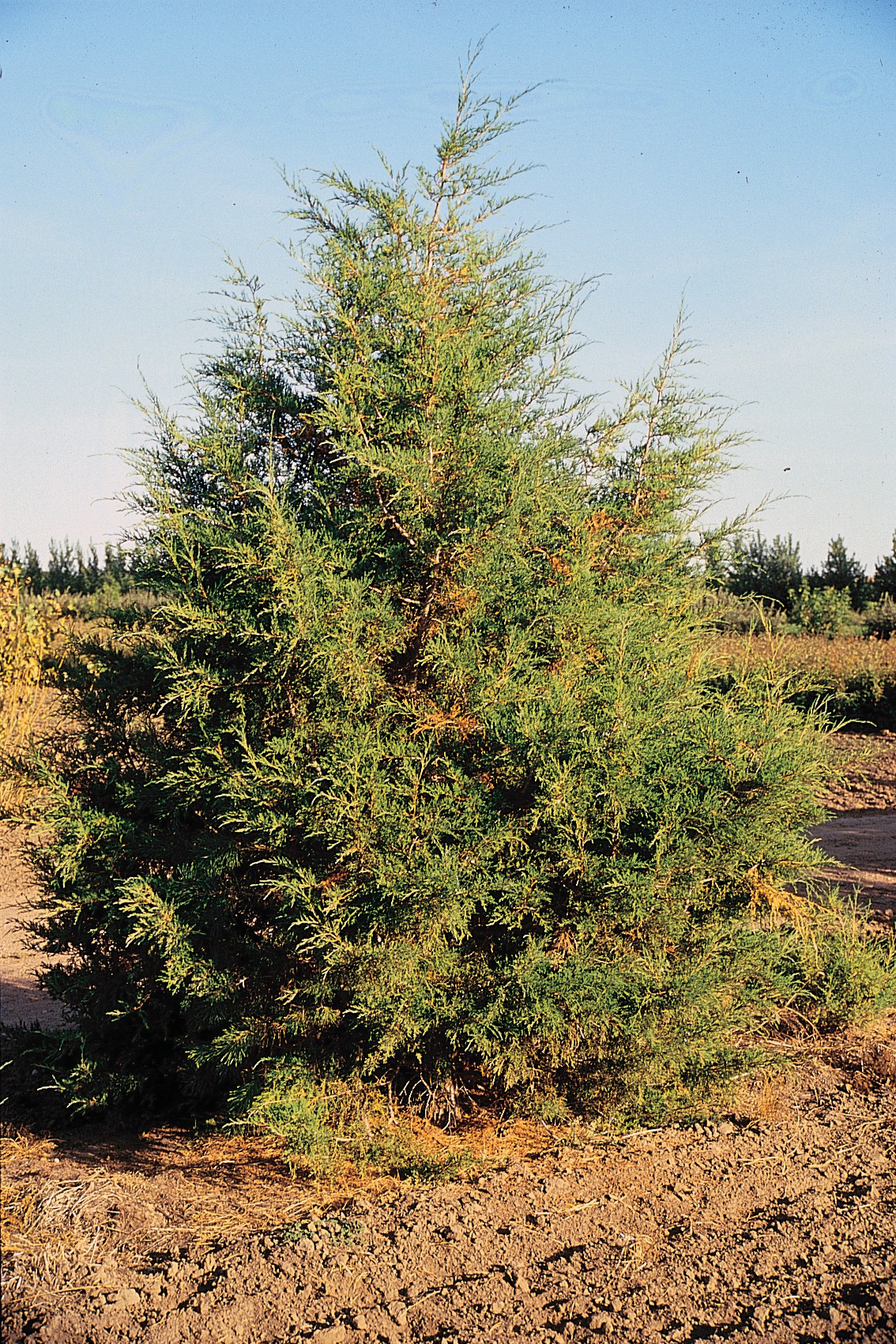- Juniperus scopulorum
Taxobox
name = "Juniperus scopulorum"
status = LR/lc | status_system = IUCN2.3
status_ref = [IUCN2006|assessors=Conifer Specialist Group|year=1998|id=42252|title=Juniperus scopulorum|downloaded=12 May 2006]

image_width = 240px
image_caption = "Juniperus scopulorum" inNorth Dakota
regnum =Plant ae
divisio =Pinophyta
classis = Pinopsida
ordo =Pinales
familia =Cupressaceae
genus = "Juniperus "
species = "J. scopulorum"
binomial = "Juniperus scopulorum"
binomial_authority = Sarg."Juniperus scopulorum" (Rocky Mountain Juniper) is a species of
juniper native to westernNorth America , inCanada inBritish Columbia and southwestAlberta , in theUnited States fromWashington east toNorth Dakota , south toArizona and also locally westernTexas , and northernmostMexico fromSonora east toCoahuila . It grows at altitudes of 500-2,700 m on dry soils, often together with otherjuniper species.Farjon, A. (2005). "Monograph of Cupressaceae and Sciadopitys". Royal Botanic Gardens, Kew. ISBN 1-84246-068-4] Adams, R. P. (2004). "Junipers of the World". Trafford. ISBN 1-4120-4250-X] Gymnosperm Database: [http://www.conifers.org/cu/ju/scopulorum.htm "Juniperus scopulorum"] ] Flora of North America: [http://www.efloras.org/florataxon.aspx?flora_id=1&taxon_id=233500739 "Juniperus scopulorum"] ]It is a small
tree reaching 5-15 m (rarely to 20 m) tall, with a trunk up to 1 m (rarely 2 m) diameter. The shoots are slender, 0.7-1.2 mm diameter. The leaves are arranged in opposite decussate pairs, or occasionally in whorls of three; the adult leaves are scale-like, 1-2 mm long (to 5 mm on lead shoots) and 1-1.5 mm broad. The juvenile leaves (on young seedlings only) are needle-like, 5-10 mm long. The seed cones are berry-like, globose to bilobed, 6-9 mm in diameter, dark blue with a pale blue-white waxy bloom, and contain twoseed s (rarely one or three); they are mature in about 18 months. Thepollen cones are 2-4 mm long, and shed their pollen in early spring. It is dioecious, producing cones of only one sex on each tree.One particular specimen, the "Jardine Juniper" in
Utah , is thought to be over 1500 years old, [Utahlink: [http://www.uen.org/utahlink/tours/tourFames.cgi?tour_id=1027 Jardine Juniper] ] while a dead trunk found in New Mexico was found to have 1,888 rings; older trees in the same area are suspected to exceed 2,000 years.It is closely related to "
Juniperus virginiana ", and often hybridizes with it where their ranges meet on theGreat Plains . Hybrids with "Juniperus horizontalis " also occur.An isolated population of junipers occurs close to sea level in the
Puget Sound area and southeasternVancouver Island . Previously included in "J. scopulorum", it has recently been shown to be genetically distinct, and has been described as a new species "Juniperus maritima ". It is a cryptic species barely distinguishable on morphology, though it does differ inphenology , with the cones maturing in 14–16 months, and often has the tips of the seeds exposed at the cone apex.Adams, R. P. (2007). "Juniperus maritima", the seaside juniper, a new species from Puget Sounds, North America. "Phytologia" 89 (3): 263-283. Available [http://www.juniperus.org/AdamsPapersPDFFiles/203-Phyto89(3)263-283JmaritimaScopVirgPugSound.pdf online] (pdf file).]Uses
The
cultivar 'Skyrocket' is a very popularornamental plant in gardens, grown for its very slender, strictly erect growth habit. Several other cultivars are also grown to a lesser extent.References
Wikimedia Foundation. 2010.
